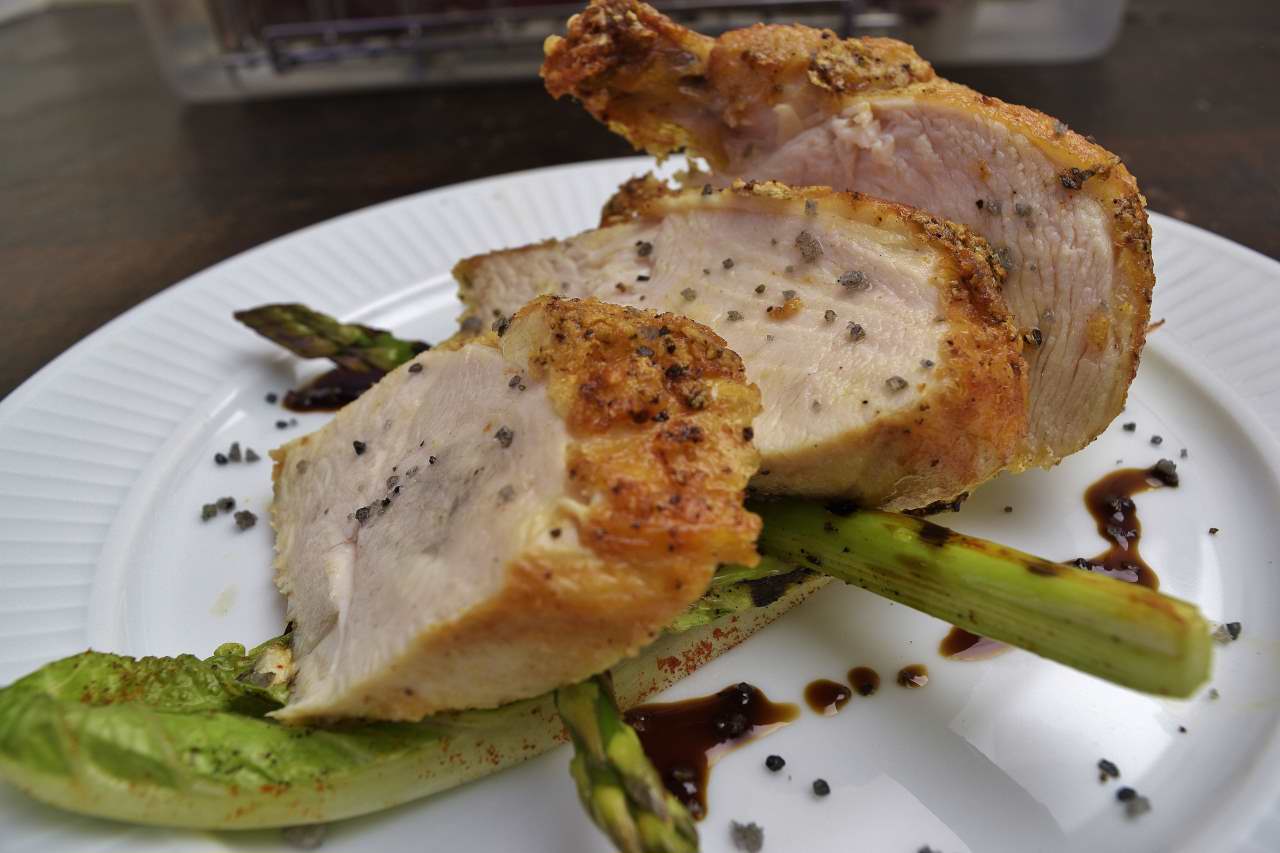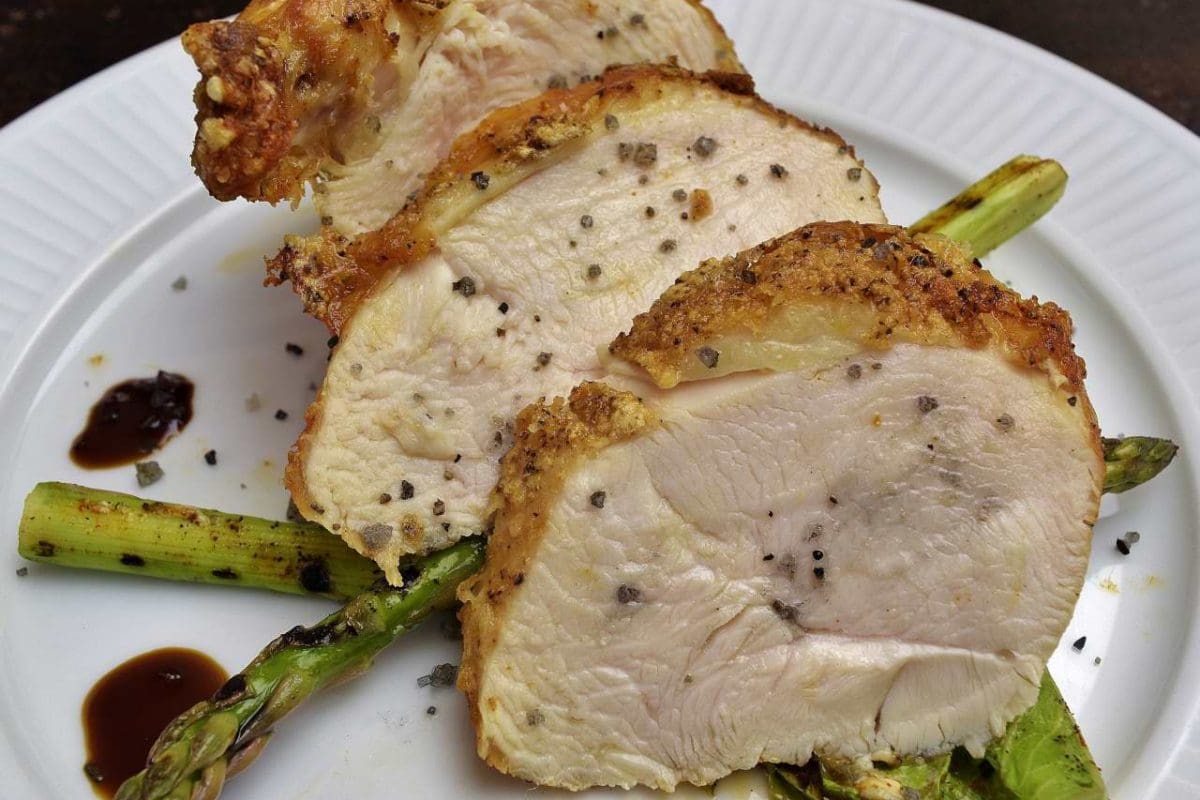Serves 1-2
Level of difficulty 3
Above: Lipavi C10 container, N10 polycarbonate rack. Lipavi C10L lid.
Procedure:
Preheat the sous vide bath to
135 F/57 C
Vacuum seal the chicken breasts in separate bags. This makes it easier to cold shock them later, easier to store in the refrigerator, and allows you to determine just how much chicken is needed for a particular situation. You can use all the chicken at once or you can prepare just one piece.
Process the breast at 135 F/57 C for a minimum of 4 hours and as long as 8 hours, whatever is more convenient for you! Because of the precise temperatures used in sous vide, the chicken cannot overcook.
After processing, shock the bags in iced water until they reach 70 F/21 C. Refrigerate at 40 F/4 C until use. The sealed packages can be safely refrigerated for up to two weeks. Now you can execute your favorite recipe at your convenience without devoting an entire day to preparing it.
Day of service
Remove the chicken from the packaging and pat dry. Shake just enough flour to dry the surface.
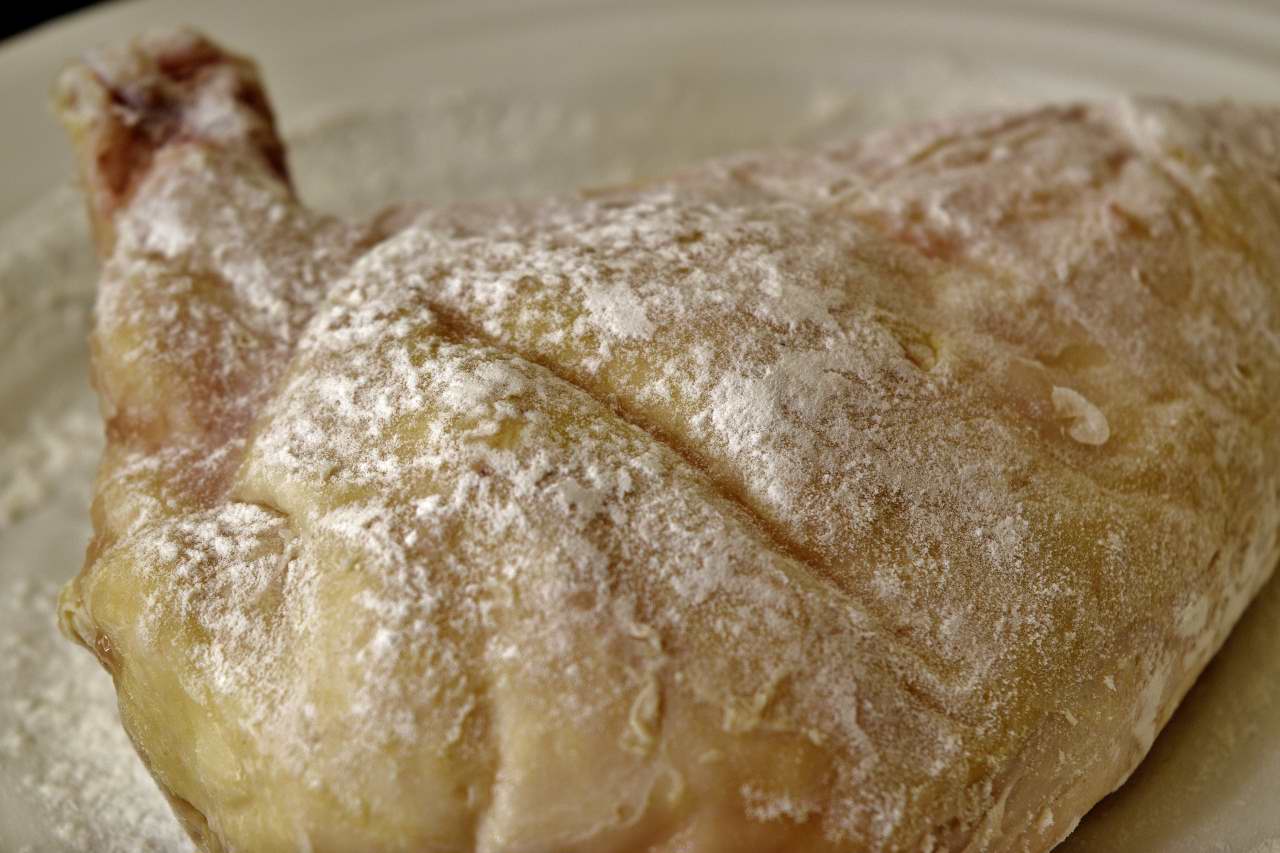
This amount of flour is within the carbo limit, but dissolves into the frying medium regardless. Beat the egg white with a fork and then spread/brush on the chicken.
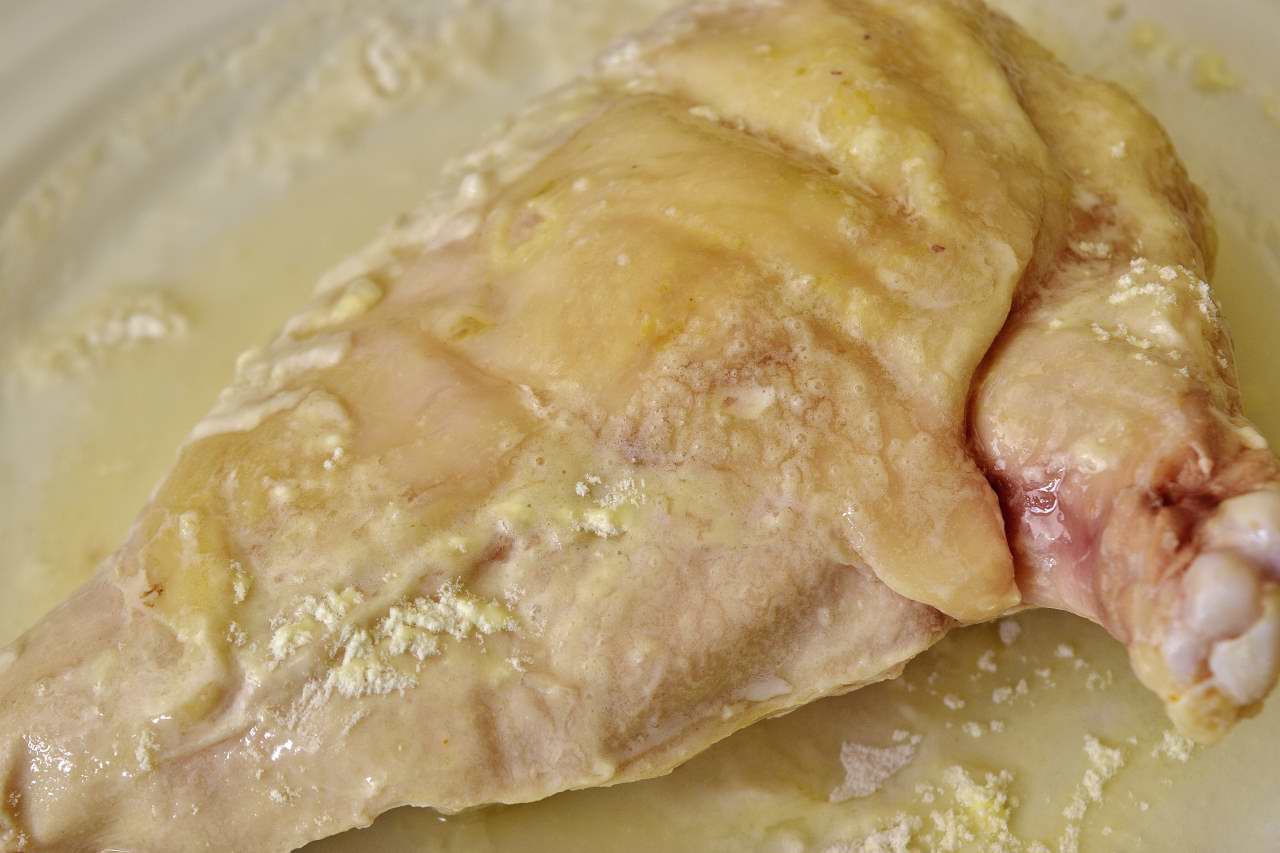
Sprinkle both sides with the salt and pepper. Set aside on parchment so the coating has a chance to cling.
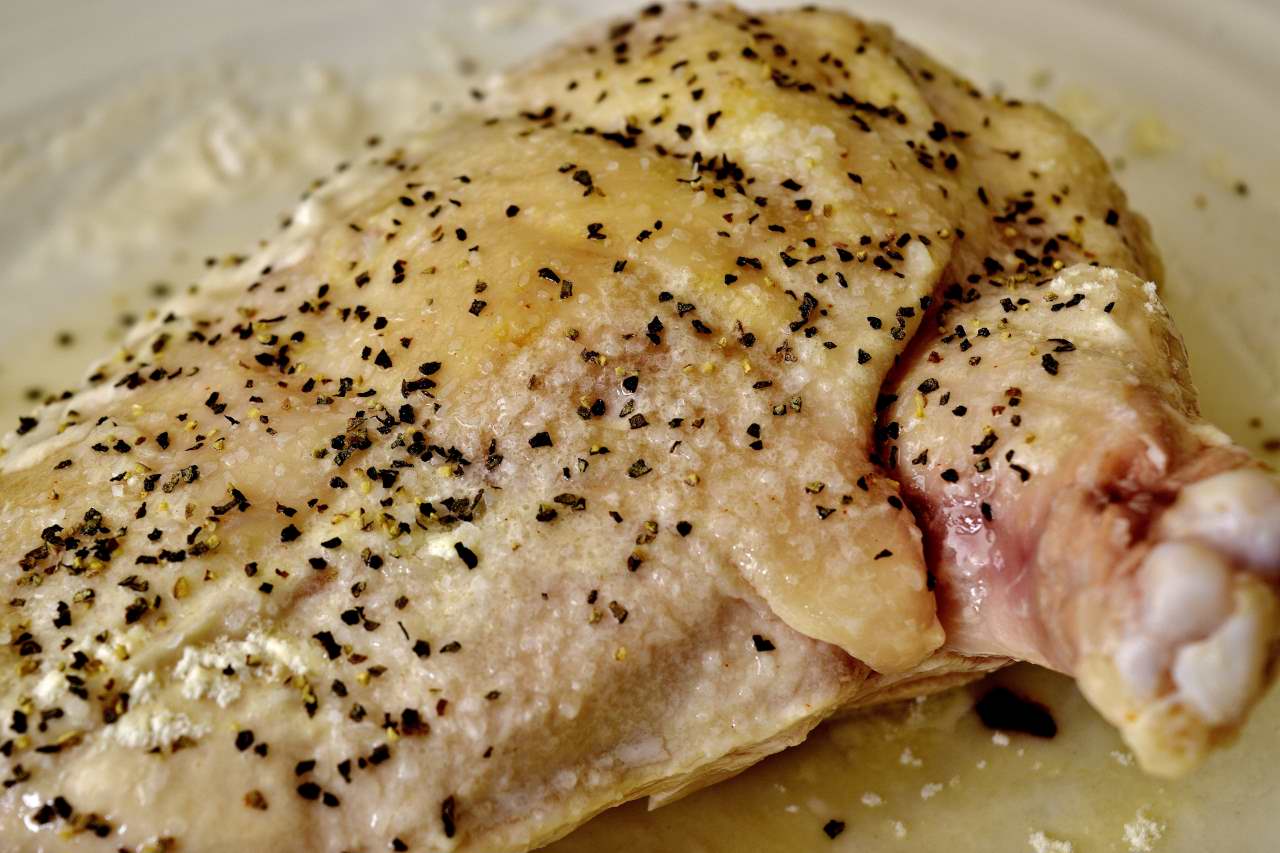
Remove the outer leaves from the head of Romaine lettuce and reserve for sandwiches, burgers, etc. Cut the head in half lengthwise, but do not cut off the core–this holds the lettuce together. Paint the flat surface of the Romaine with the mayonnaise and sprinkle with paprika. Set aside.
Use a vegetable peeler to shave the asparagus–start just past the tip and peel towards the stalk end. This prevents toughness. Stage the asparagus on to a plate and sprinkle with a few drops of oil. Sprinkle with kosher salt. Set aside.
Heat the cast iron broiler pan/skillet to 500 F/260 C.
Lay the flat side of the lettuce on the surface and sear it for 30-45 seconds or as long as it takes to get a dark mark. Cut the core off of the Romaine halves and lay each one on a plate.

Lay the asparagus in the pan for 30-45 seconds and then roll on to the other side for another 30 seconds–this should give you dark marks without overcooking the asparagus.
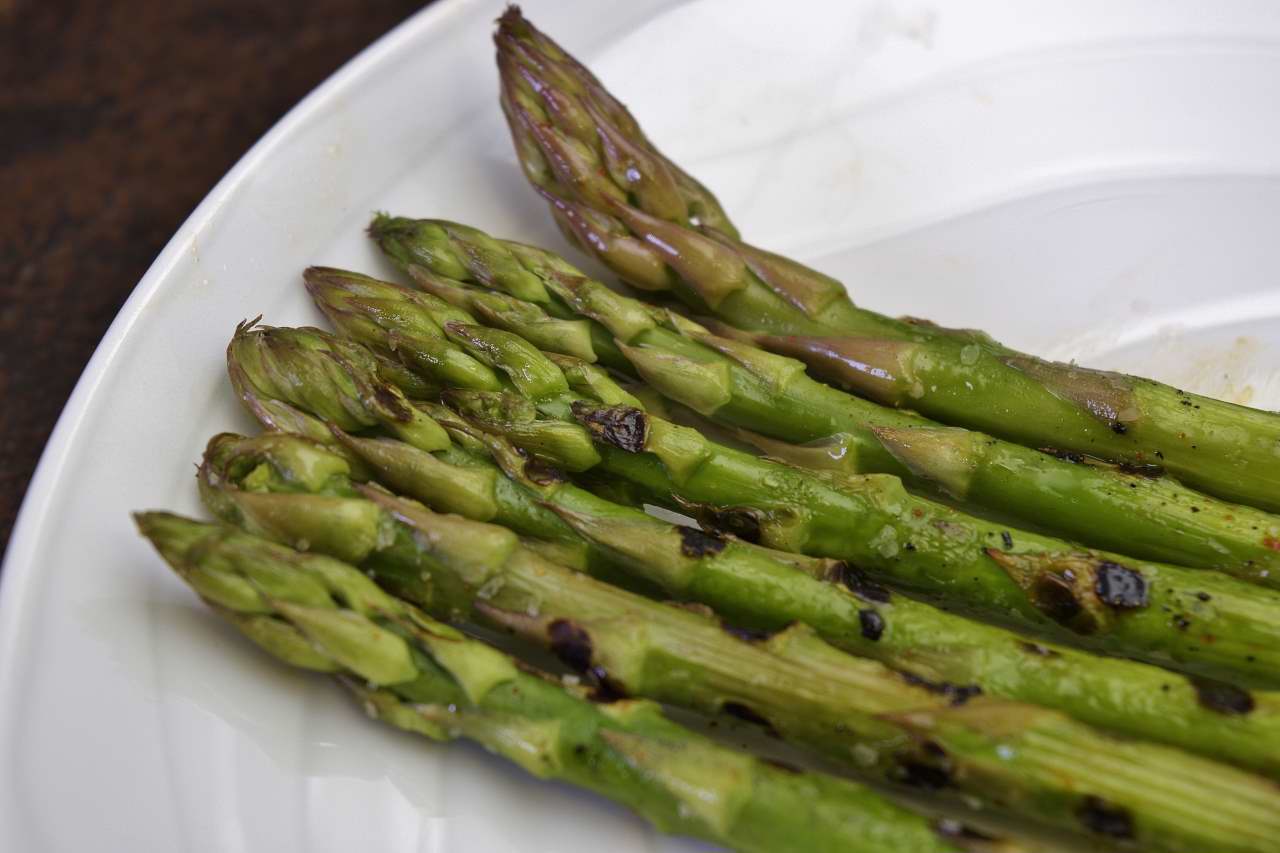
Arrange the asparagus on the grilled lettuce.

Heat the oil to 300 F/150 C. Do not attempt to guess the temperature–the exact temperature is important. Use a probe thermometer or infrared thermometer to confirm the temperature.
Carefully lower one of the breasts in the oil, bottom side down and skin side up. It may be that you don’t have enough oil in the pan to fully submerge the chicken breast. This happens. Do not add more oil. Use a spatula to lift the breast up and move it over just a little so it does not actually rest on the bottom of the pan. The temperature of the oil will go down to 250 F/121 C or thereabouts. Do not let the oil go below 250 F/121 C. Turn up the burner if necessary.
Add the other breast if the pan is big enough and there is ample room between the pieces of chicken.

Fry the breasts until they achieve the desired color. This will take 5-6 minutes, depending on whether the breasts are fully submerged or not. I always make sure that they are. The cost of a little extra oil is worth the end result being just right.
Do you ever wonder if the chicken is hot all the way through? There is a way to tell without a thermometer, but you must stand there and watch–and listen–for the entire time the chicken is in the oil. At a certain moment, you will see the bubbling increase. The sound of the frying breast will also increase–dramatically. This means that the moisture in the chicken is hot enough to start vaporizing out of the chicken into the surrounding oil. In order for this to happen, the chicken must be hot all the way through. Listen for the sound. Note: Eventually the chicken would lose enough moisture to actually float to the top like a French fry. We would rather not wait until that happens
Take the chicken out of the fryer. Let it rest on a paper towel for a couple of minutes so it is easier to handle. You will see that there is almost no oil on the paper towel. Congratulations! That means that the correct temperature was used. The chicken itself cannot absorb oil. Nothing can go through the surface of the chicken, but water can come out. If fried chicken is greasy, it is because the batter/breading absorbed oil. Breading can absorb a LOT of oil. Slice the chicken and fan it out.

Arrange the sliced chicken on top of the grilled Romaine and drizzle the plate with balsamic syrup. Do not drizzle the syrup on the chicken itself. This creates an unappealing visual effect. Sprinkle with Hawaiian volcanic salt, Himalayan pink salt, Maldon, etc.

This is an excellent dish, whether you are on the Ketogenic diet or not.
